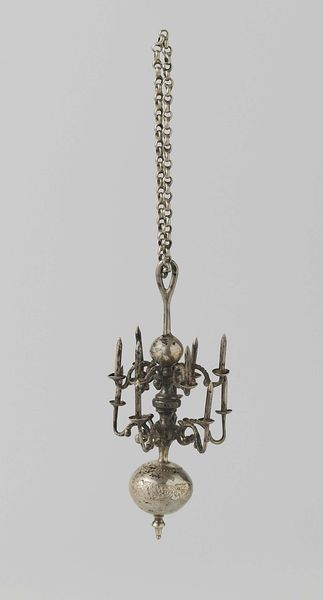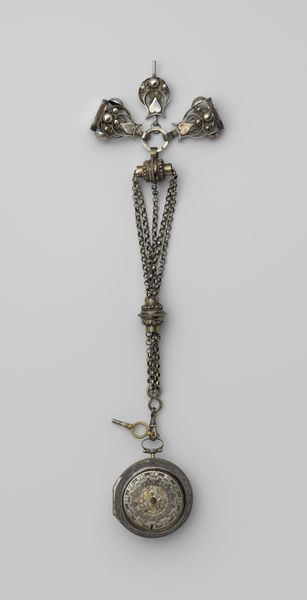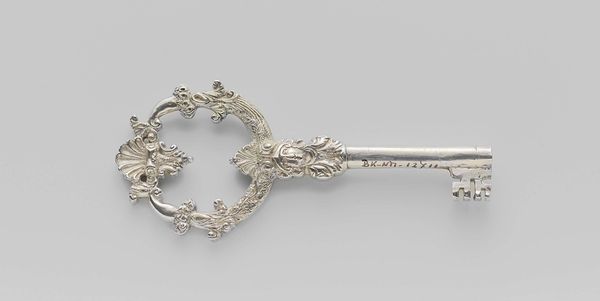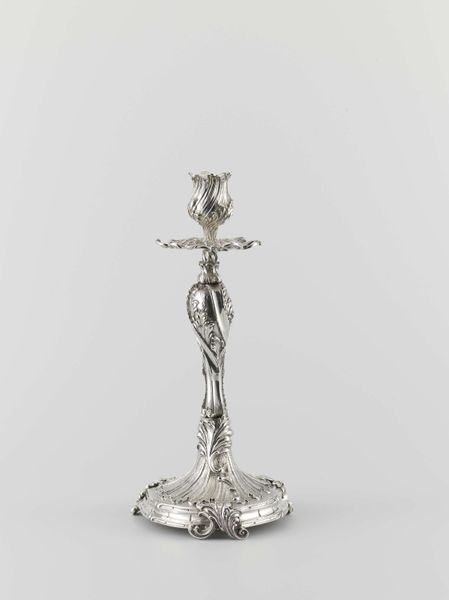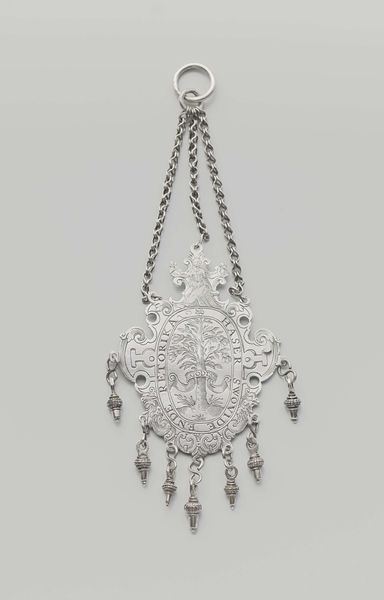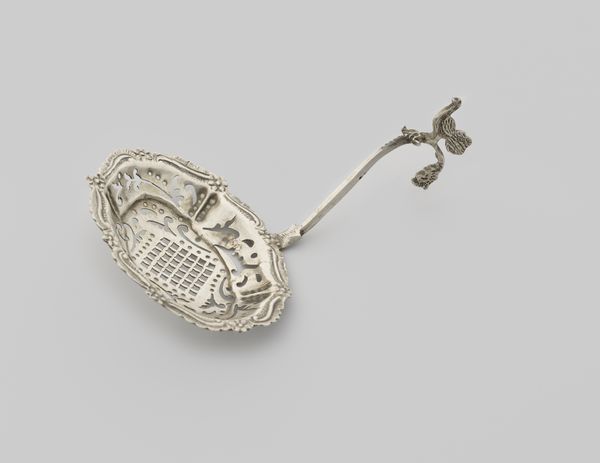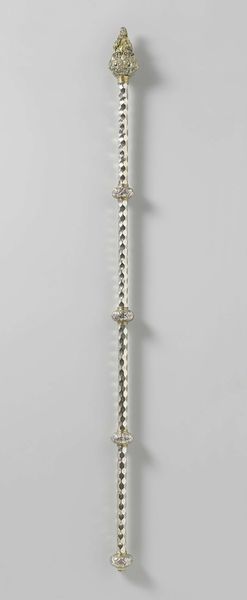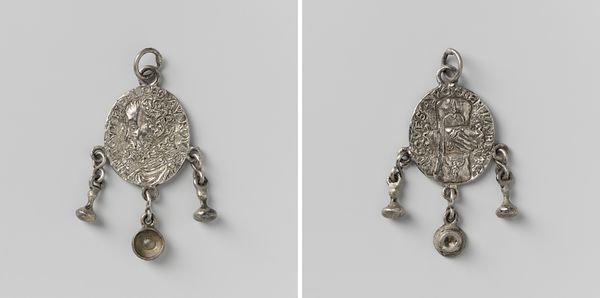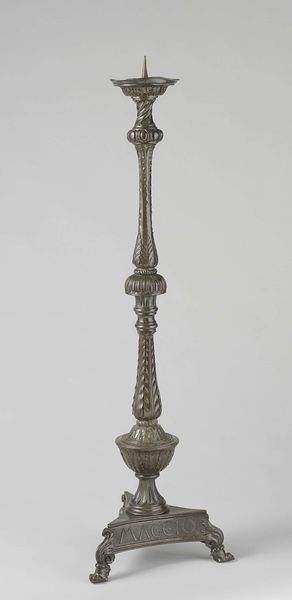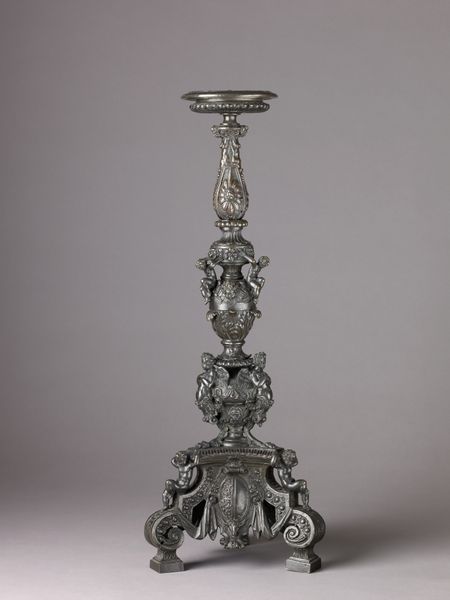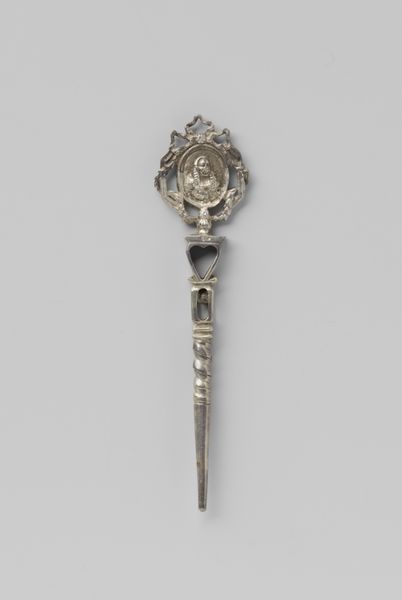
Kluwenhouder, opgebouwd uit C-voluten versierd met bladeren, schuim- en rocaillemotieven en bloemen 1775
0:00
0:00
Dimensions: height 16.8 cm, width 11.8 cm, depth 2.4 cm, weight 66 gr
Copyright: Rijks Museum: Open Domain
Editor: This is a stunning silver "Kluwenhouder," or yarn holder, made around 1775 by Dirk Froger. The Rococo style is just so intricate, all those C-scrolls and flowers! It feels so delicate, yet I imagine it would have been quite precious to its owner. How do you interpret this work within its historical context? Curator: It's beautiful, isn't it? Beyond its obvious function and decorative appeal, this yarn holder speaks volumes about the societal role of women in the 18th century. While seemingly innocuous, such domestic objects often reinforced prescribed gender roles. The Rococo style itself, with its emphasis on ornamentation and elegance, reflects the values of a leisure class largely built upon colonial exploitation and inequality. What kind of labor do you think went into textile production during that time? Editor: I never thought about it that way! I guess textile production was a really important, and probably exploitative, industry at the time. So, even something as seemingly innocent as a yarn holder connects to those bigger economic and social structures? Curator: Precisely. These intricate objects can also tell us about class and power. Who had access to these luxury items? Who was producing the textiles? The visual beauty of the Rococo style served to mask the underlying social and economic disparities. Considering the Dutch East India Company's role at the time, this yarn holder may symbolize wealth extracted through oppression, literally winding it around the fingers of privilege. What questions does this provoke for you about art and its relationship to power? Editor: That's a pretty powerful idea. It makes me wonder if celebrating the craftsmanship alone is missing the point. We need to consider the uncomfortable truths woven into its creation and use. I'll never look at Rococo the same way! Curator: Exactly. It is about urging us to analyze the multiple stories behind seemingly decorative items, using that lens to promote dialogue, equity and justice today.
Comments
No comments
Be the first to comment and join the conversation on the ultimate creative platform.
